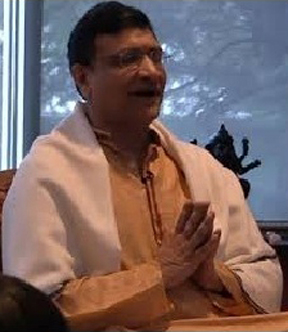
The voters of India, the world’s largest democracy, have elected Narendra Modi as their next prime minister. Modi promised Indian citizens the dawn of a new era, one that will be filled with economic growth and solid governance. In his acceptance speech, Modi told a cheering crowd, “I didn’t get a chance to sacrifice my life in India’s freedom struggle, but I have the chance to dedicate myself to good governance. I will develop this country. I will take it to new heights.”
Does India have what it takes to become the next global power? Renowned Swami Rama Tirtha (1873 -1906), who was a brilliant Professor of Mathematics, predicted prosperity for the Indian subcontinent by explaining cycles of time called “Law of Periodicity.” More than a century ago, he wrote: “Everything in this world moves rhythmically, and the Law of Periodicity governs all phenomena.
Nature shows that the sun moves from east to west, coming back to the east to begin a new cycle.” In accordance with this law, financial prosperity has been moving in the past 5000 years from the peak of civilization in India.
Rama Tirtha predicted: “After Japan, China will rise and gain prosperity and strength. After China, the sun of prosperity and learning will again smile at India.”
The peak of economic and cultural growth in India was witnessed during the Indus Valley civilization, which flourished 4500 years ago. Although South Asia is the most poverty stricken region of the world today, it holds tremendous potential for transformation and development. SAARC (South Asian Association for Regional Cooperation) was formed in 1985 to promote the economic welfare of this region but has not proved to be very effective.
Just as the European Community developed into the European Union (EU) in 1993, so also SAARC could develop into an “Indus Union.” The formation of regional union based on the EU model is the best way to bring about radical and positive change in the entire region.
It is time to unify the economies of India, Pakistan, Afghanistan, Nepal, Bhutan, Bangladesh, Sri Lanka, the Maldives, Myanmar, and others that were once an integral part of India into an “Indus Union.”
The formation of an “Indus Union” would result in overall growth. With a combined population of over 1.7 billion (World: 7.2 billion), these neighboring nations together would become the world’s largest consumer market, attracting unprecedented levels of commerce and investment from foreign countries.
An EU inspired “Indus Union” model could solve the long-standing Kashmir dispute between Pakistan and India and de-escalate their deadly arms race. The funding for the combined defense budgets of Pakistan and India – over $47 billion – can then be used instead to reduce the desperate poverty of the people in South Asia and to promote modernization.
It could ultimately create a common currency, say “Indo,” for member nations just as Euro is currently the official currency of the Eurozone.
The formation of an “Indus Union” would result in rapid growth, reduction in poverty, and would mark the beginning of a golden era for South Asia.
Shiv R Jhawar
(Noble World Foundation)






